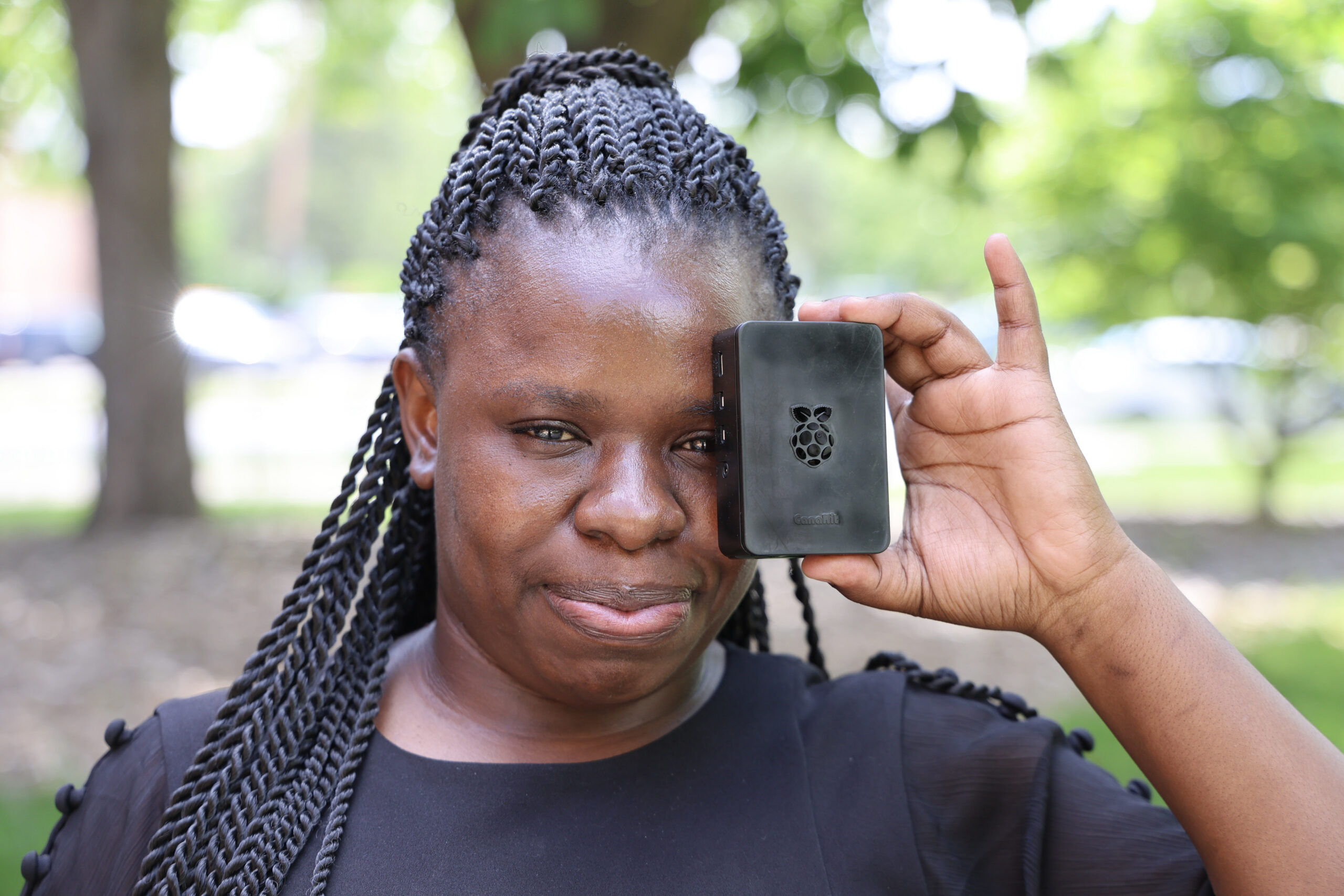Graduate student Metrid Okumu is advancing the future of hypersonic speed analysis
Author: Anna Keplinger

Author: Anna Keplinger

Metrid Okumu, a graduate student in civil engineering, joined Professor Simon Laflamme’s Foundations of Adaptive Systems and Technologies (FAST) Laboratory to explore the possibilities of intelligent infrastructure with her background in computer engineering.
In a recent project sponsored by the Midwest Regional Network of the Air Force Research Laboratory, the Air Force Office of Scientific Research, and the National Science Foundation within Laflamme’s long-term collaboration with the Air Force Research Laboratory at the Eglin Air Force Base, Okumu had the opportunity to use her background in research for new methods enabling hypersonic state estimation.
Capturing high-speed data is a challenge
When objects are moving significantly faster than the speed of sound, the technology used to measure and analyze them must process just as fast to provide accurate data. Hypersonic state estimation consists of assessing the condition of materials and structures at speeds greater than Mach 5, or 1 mile per second. Such capabilities could support the development of active blast mitigation systems for buildings, and in empowering the next generation of engineering systems such as hypersonic vehicles and advanced weaponry.
Okumu supported the team’s machine-learning model for blast mitigation, working within software code to ensure a smooth technology connection.
“We’re working in sub-milliseconds, so any algorithm designed for our purpose must function at very high speeds,” Okumu said. “The integration of software and hardware is fundamental to our project, so everything is communicating seamlessly.”
Bite-sized machine, big impact
Housed on a computer small enough to hold in one hand, the team’s solution is showing promise in both models and demonstrations learning and identifying complex systems in real-time and at high speeds—exciting results for Jacob Dodson, collaborator at the Air Force Research Laboratory.
“This research will enable high speed decision making and maximize the function of Air Force structures,” said Dodson.
This project is a shared effort between Laflamme’s team at Iowa State, a team at the University of South Carolina, and researchers at the Air Force Research Laboratory, bringing interdisciplinary experts together to explore this novel use of machine learning. Okumu recently had the opportunity to spend a week at the Eglin Air Force Base to collaborate with other researchers on the team.
“This collaboration has strengthened my technical and communication skills and reinforced the importance of bridging theory with real-world application,” said Okumu, “ I am grateful for the experience with Professor Laflamme and this team; it has opened my eyes to a career in machine learning, and the impact I bring to complex projects like this.”
